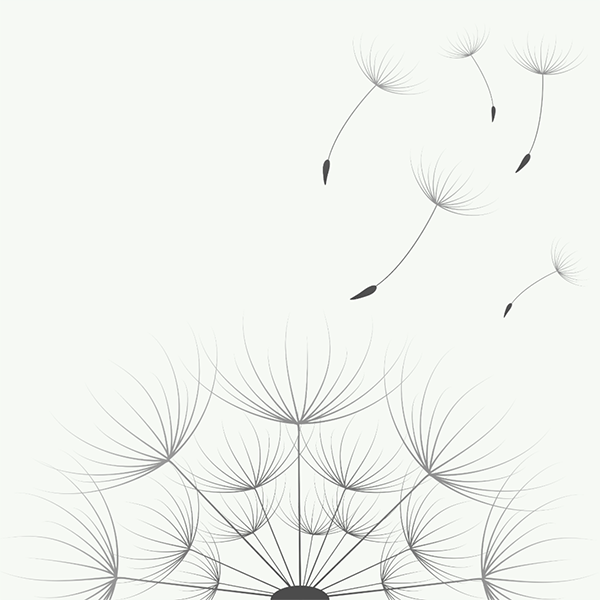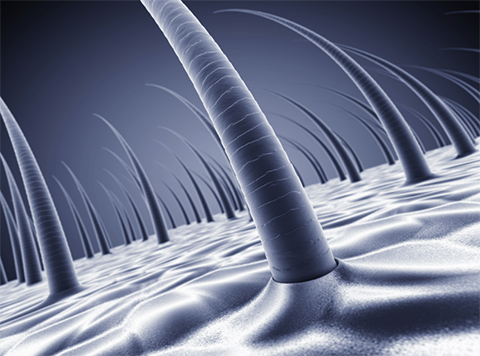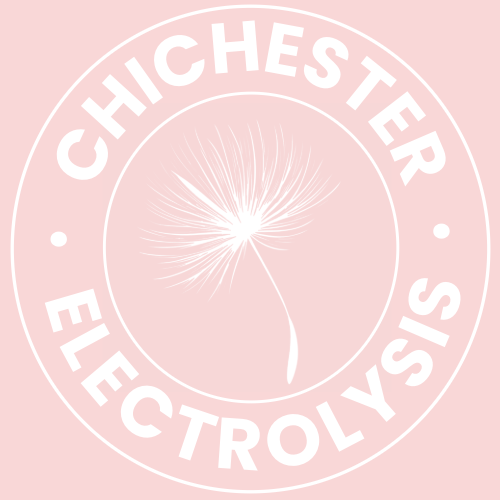transgender hair removal
‘If you are currently in the process of transitioning we’re here to help you.’
Transgender hair removal Chichester, West Sussex
At Chichester electrolysis, we recognise the importance of feeling at ease and confident during this transformative time. Whether you’re just beginning your transition or making progress along the way, you don’t have to navigate the struggle of unwanted hair by yourself. We’re here to support you, providing personalized electrolysis treatments designed specifically for you. Together, we’ll work towards achieving the smooth, feminine look you’ve always envisioned, empowering you to embrace your true identity with confidence and pride. Transgender hair removal.

transgender hair removal
‘If you are currently in the process of transitioning we’re here to help you.’
At Chichester electrolysis, we recognise the importance of feeling at ease and confident during this transformative time.  Whether you’re just beginning your transition or making progress along the way, you don’t have to navigate the struggle of unwanted hair by yourself. We’re here to support you, providing personalized electrolysis treatments designed specifically for you. Together, we’ll work towards achieving the smooth, feminine look you’ve always envisioned, empowering you to embrace your true identity with confidence and pride.
Whether you’re just beginning your transition or making progress along the way, you don’t have to navigate the struggle of unwanted hair by yourself. We’re here to support you, providing personalized electrolysis treatments designed specifically for you. Together, we’ll work towards achieving the smooth, feminine look you’ve always envisioned, empowering you to embrace your true identity with confidence and pride.
TRANSGENDER HAIR REMOVAL
At Chichester electrolysis, we recognise the importance of feeling at ease and confident during this transformative time. Whether you’re just beginning your transition or making progress along the way, you don’t have to navigate the struggle of unwanted hair by yourself. We’re here to support you, providing personalized electrolysis treatments designed specifically for you. Together, we’ll work towards achieving the smooth, feminine look you’ve always envisioned, empowering you to embrace your true identity with confidence and pride.

why choose electrolysis
Electrolysis is the only hair removal method that’s proven to be permanent and is the most reliable option available to permanently remove transgender facial & body hair.
Permanent Hair Removal: Electrolysis is the only medically approved method for permanent hair removal. It has been approved by both the NHS and FDA.
Suitable for all skin types and hair colours: Electrolysis is effective for people no matter their skin type or hair color, unlike some other methods like laser hair removal.
Comprehensive Treatment: From facial hair to body hair removal electrolysis provides a comprehensive solution for addressing unwanted hair growth across all areas of the body.
Safe and Effective: All electrolysis treatments are conducted safely and effectively, with minimal risk of adverse side effects, providing peace of mind.
Personalized Care: Each treatment plan is tailored to your individual needs and goals, ensuring that your unique transition journey is supported and respected throughout the process.
Long-term Cost Efficiency: While electrolysis may require an initial investment of time and resources, its permanent results offer long-term cost savings compared to other hair removal methods.
Transgender hair removal brighton, trans hair removal brighton, if you are transitioning brighton, transgender brighton sussex, brighton trans, brighton transgender
why choose electrolysis
Electrolysis is the only hair removal method that’s proven to be permanent and is the most reliable option available to permanently remove transgender facial & body hair.
Permanent Hair Removal: Electrolysis is the only medically approved method for permanent hair removal. It has been approved by both the NHS and FDA.
Suitable for all skin types and hair colours: Electrolysis is effective for people no matter their skin type or hair color, unlike some other methods like laser hair removal.
Comprehensive Treatment: From facial hair to body hair removal electrolysis provides a comprehensive solution for addressing unwanted hair growth across all areas of the body.
Safe and Effective: All electrolysis treatments are conducted safely and effectively, with minimal risk of adverse side effects, providing peace of mind.
Personalized Care: Each treatment plan is tailored to your individual needs and goals, ensuring that your unique transition journey is supported and respected throughout the process.
Long-term Cost Efficiency: While electrolysis may require an initial investment of time and resources, its permanent results offer long-term cost savings compared to other hair removal methods.
why choose electrolysis
Electrolysis is the only hair removal method that’s proven to be permanent and is the most reliable option available to permanently remove transgender facial & body hair.
Permanent Hair Removal: Electrolysis is the only medically approved method for permanent hair removal. It has been approved by both the NHS and FDA.
Suitable for all skin types and hair colours: Electrolysis is effective for people no matter their skin type or hair color, unlike some other methods like laser hair removal.
Comprehensive Treatment: From facial hair to body hair removal electrolysis provides a comprehensive solution for addressing unwanted hair growth across all areas of the body.
Safe and Effective: All electrolysis treatments are conducted safely and
effectively, with minimal risk of adverse side effects, providing peace of mind.
Personalized Care: Each treatment plan is tailored to your individual needs and goals, ensuring that your unique transition journey is supported and respected throughout the process.
Long-term Cost Efficiency: While electrolysis may require an initial investment of time and resources, its permanent results offer long-term cost savings compared to other hair removal methods.Transgender hair removal brighton, trans hair removal brighton,
why choose electrolysis
Electrolysis is the only hair removal method that’s proven to be permanent and is the most reliable option available to permanently remove transgender facial & body hair.
Permanent Hair Removal: Electrolysis is the only medically approved method for permanent hair removal. It has been approved by both the NHS and FDA.
Suitable for all skin types and hair colours: Electrolysis is effective for people no matter their skin type or hair color, unlike some other methods like laser hair removal.
Comprehensive Treatment: From facial hair to body hair removal electrolysis provides a comprehensive solution for addressing unwanted hair growth across all areas of the body.
Safe and Effective: All electrolysis treatments are conducted safely and effectively, with minimal risk of adverse side effects, providing peace of mind.
Personalized Care: Each treatment plan is tailored to your individual needs and goals, ensuring that your unique transition journey is supported and respected throughout the process.
Long-term Cost Efficiency: While electrolysis may require an initial investment of time and resources, its permanent results offer long-term cost savings compared to other hair removal methods.
GETTING STARTED
The process begins with a thorough consultation. In this session, we assess your hair growth, talk about your goals, and create a personalized treatment plan.
How Many Sessions Will I Need ? Gender & Hair
Electrolysis isn’t a quick fix, especially for transgender women. It can take anywhere from 8 months to 3 years, in some cases, to achieve the desired results. The total number of sessions required for permanent hair removal from a specific area varies based on several factors:
1/ Hormonal Therapy: Transgender women undergoing hormone replacement therapy (HRT) may experience changes in hair growth patterns. The effectiveness of electrolysis treatment can be influenced by hormone levels, requiring adjustments in treatment frequency.
2/ Facial Hair Density: The density and thickness of facial hair varies. Dense hair growth may require more sessions to achieve complete removal, especially in areas such as the beard and upper lip.Transgender hair removal.
3/ Skin Sensitivity: Skin sensitivity, particularly in facial areas, can affect the response to electrolysis treatment and may require a more gradual approach to minimise discomfort and irritation.
4/ Hair Follicle Shape: The shape of hair follicles can impact treatment effectiveness. Curved or deeply rooted follicles may be more challenging to treat and may require additional sessions for complete removal.
5/ Individual Response: Each person’s response to electrolysis treatment varies. Factors such as pain tolerance, skin hydration, and unknown variables can influence treatment outcomes, requiring a personalized approach. Transgender hair removal.
Understanding the differences in hair treatment for genetic males and females is important. Typically, genetic females usually need less treatment compared to transgender individuals assigned male at birth (AMAB). Female hair tends to be finer and less dense, especially after events like childbirth or menopause.Transgender hair removal.
On the other hand, transgender individuals assigned male at birth (AMAB) often have coarser, thicker, and denser facial hair. This is because their hair growth is influenced by male puberty and testosterone. By the time transgender individuals seek treatment, years of exposure to male hormones have led to larger, coarser, and denser hair growth, which requires more intensive treatment.

During your initial consultation, we’ll discuss these factors in detail and create a customized treatment plan tailored to your unique needs and transition goals. While the process may require dedication and patience, rest assured that with our expertise, once the unwanted hair is gone, it’s gone forever, helping you achieve the feminine appearance you desire.
Transgender hair removal brighton, trans hair removal brighton,
GETTING STARTED
The process begins with a thorough consultation. In this session, we assess your hair growth, talk about your goals, and create a personalized treatment plan.
How Many Sessions Will I Need ? Gender & Hair
Electrolysis isn’t a quick fix, especially for transgender women. It can take anywhere from 8 months to 3 years, in some cases, to achieve the desired results. The total number of sessions required for permanent hair removal from a specific area varies based on several factors:
1/ Hormonal Therapy: Transgender women undergoing hormone replacement therapy (HRT) may experience changes in hair growth patterns. The effectiveness of electrolysis treatment can be influenced by hormone levels, requiring adjustments in treatment frequency.
2/ Facial Hair Density: The density and thickness of facial hair varies. Dense hair growth may require more sessions to achieve complete removal, especially in areas such as the beard and upper lip.
3/ Skin Sensitivity: Skin sensitivity, particularly in facial areas, can affect the response to electrolysis treatment and may require a more gradual approach to minimise discomfort and irritation.
4/ Hair Follicle Shape: The shape of hair follicles can impact treatment effectiveness. Curved or deeply rooted follicles may be more challenging to treat and may require additional sessions for complete removal.
5/ Individual Response: Each person’s response to electrolysis treatment varies. Factors such as pain tolerance, skin hydration, and unknown variables can influence treatment outcomes, requiring a personalized approach.
Understanding the differences in hair treatment for genetic males and females is important. Typically, genetic females usually need less treatment compared to transgender individuals assigned male at birth (AMAB). Female hair tends to be finer and less dense, especially after events like childbirth or menopause.
On the other hand, transgender individuals assigned male at birth (AMAB) often have coarser, thicker, and denser facial hair. This is because their hair growth is influenced by male puberty and testosterone. By the time transgender individuals seek treatment, years of exposure to male hormones have led to larger, coarser, and denser hair growth, which requires more intensive treatment.
During your initial consultation, we’ll discuss these factors in detail and create a customized treatment plan tailored to your unique needs and transition goals. While the process may require dedication and patience, rest assured that once the unwanted hair is gone, it’s gone forever, helping you achieve the feminine appearance you desire.
GETTING STARTED
The process begins with a thorough consultation. In this session, we assess your hair growth, talk about your goals, and create a personalized treatment plan.
How Many Sessions Will I Need ?
Electrolysis isn’t a quick fix, especially for transgender women. It can take anywhere from 8 months to 3 years, in some cases, to achieve the desired results. The total number of sessions required for permanent hair removal from a specific area varies based on several factors:
1/ Hormonal Therapy: Transgender women undergoing hormone replacement therapy (HRT) may experience changes in hair growth patterns. The effectiveness of electrolysis treatment can be influenced by hormone levels, requiring adjustments in treatment frequency.
2/ Facial Hair Density: The density and thickness of facial hair varies. Dense hair growth may require more sessions to achieve complete removal, especially in areas such as the beard and upper lip.
3/ Skin Sensitivity: Skin sensitivity, particularly in facial areas, can affect the response to electrolysis treatment and may require a more gradual approach to minimise discomfort and irritation.
4/ Hair Follicle Shape: The shape of hair follicles can impact treatment effectiveness. Curved or deeply rooted follicles may be more challenging to treat and may require additional sessions for complete removal.
5/ Individual Response: Each person’s response to electrolysis treatment varies. Factors such as pain tolerance, skin hydration, and unknown variables can influence treatment outcomes, requiring a personalized approach.
Gender & Hair
Understanding the differences in hair treatment for genetic males and females is important. Typically, genetic females usually need less treatment compared to transgender individuals assigned male at birth (AMAB). Female hair tends to be finer and less dense, especially after events like childbirth or menopause.
On the other hand, transgender individuals assigned male at birth (AMAB) often have coarser, thicker, and denser facial hair. This is because their hair growth is influenced by male puberty and testosterone. By the time transgender individuals seek treatment, years of exposure to male hormones have led to larger, coarser, and denser hair growth, which requires more intensive treatment.
During your initial consultation, we’ll discuss these factors in detail and create a customized treatment plan tailored to your unique needs and transition goals. While the process may require dedication and patience, rest assured that with our expertise, once the unwanted hair is gone, it’s gone forever, helping you achieve the feminine appearance you desire.
how does it work ?
Electrolysis is the only medically recognized way of permanently removing unwanted hair from your body.
With electrolysis, each hair is individually treated and destroyed. This is done using a very fine pre-sterilized, probe. (Each probe is disposable)
The probe is gently inserted into the hair follicle which is a natural opening on the skin. A small amount of electrical current is then applied which heats and destroys the dermal papilla. This is what controls the development and growth of the hair.
There is a slight tingling and warm sensation and then the hair is gently removed using tweezers. Because the hair is destroyed it gently comes away from the skin without any pulling so no damage to the skin occurs.
electrolysis vs laser ?
The main difference is in how the treatment is applied, Lasers use a mild form of radiation which damages the hair follicles. Although it can slow down hair growth it does not permanently stop it and after a period of time the hair will grow back and more treatment will be needed. With electrolysis the hair follicles’ ability to reproduce is permanently destroyed ending its cycle of hair growth.
Laser treatment targets the melanin (pigment colour) in the hair follicle and is mainly suited for people with light skin and dark hair. It is not very effective in treating blond and grey hairs or hairs that are dark and thin. Because electrolysis directly attacks the hair follicle it can be used to treat any hair type regardless of skin color.
Because Laser treatments cover a wider area fewer sessions are needed. However, 6-8 sessions spread out over 6 weeks will still take nearly a year to complete. The success of the treatment also entirely depends on how suitable you are for treatment. Transgender hair removal.
Electrolysis does take longer because every follicle has to be individually treated. Every session takes between 1 hour to 3 hours. The best part is that once treatment has been completed that’s it, no more hair. Remember, electrolysis is the only medically-proven and legally accepted form of permanent hair removal.Transgender hair removal.
how does it work ?
Electrolysis is the only medically recognized way of permanently removing unwanted hair from your body.
With electrolysis, each hair is individually treated and destroyed. This is done using a very fine pre-sterilized, probe. (Each probe is disposable)
The probe is gently inserted into the hair follicle which is a natural opening on the skin. A small amount of electrical current is then applied which heats and destroys the dermal papilla. This is what controls the development and growth of the hair.
There is a slight tingling and warm sensation and then the hair is gently removed using tweezers. Because the hair is destroyed it gently comes away from the skin without any pulling so no damage to the skin occurs.

electrolysis vs laser ?
The main difference is in how the treatment is applied, Lasers use a mild form of radiation which damages the hair follicles. Although it can slow down hair growth it does not permanently stop it and after a period of time the hair will grow back and more treatment will be needed. With electrolysis the hair follicles’ ability to reproduce is permanently destroyed ending its cycle of hair growth.
Laser treatment targets the melanin (pigment colour) in the hair follicle and is mainly suited for people with light skin and dark hair. It is not very effective in treating blond and grey hairs or hairs that are dark and thin. Because electrolysis directly attacks the hair follicle it can be used to treat any hair type regardless of skin color.
Because Laser treatments cover a wider area fewer sessions are needed. However, 6-8 sessions spread out over 6 weeks will still take nearly a year to complete. The success of the treatment also entirely depends on how suitable you are for treatment.
Electrolysis does take longer because every follicle has to be individually treated. Every session takes between 1 hour to 3 hours. The best part is that once treatment has been completed that’s it, no more hair. Remember, electrolysis is the only medically-proven and legally accepted form of permanent hair removal.
how does it work ?
Electrolysis is the only medically recognized way of permanently removing unwanted hair from your body.
With electrolysis, each hair is individually treated and destroyed. This is done using a very fine pre-sterilized, probe. (Each probe is disposable)
The probe is gently inserted into the hair follicle which is a natural opening on the skin. A small amount of electrical current is then applied which heats and destroys the dermal papilla. This is what controls the development and growth of the hair.
There is a slight tingling and warm sensation and then the hair is gently removed using tweezers. Because the hair is destroyed it gently comes away from the skin without any pulling so no damage to the skin occurs.

electrolysis vs laser ?
The main difference is in how the treatment is applied, Lasers use a mild form of radiation which damages the hair follicles. Although it can slow down hair growth it does not permanently stop it and after a period of time the hair will grow back and more treatment will be needed. With electrolysis the hair follicles’ ability to reproduce is permanently destroyed ending its cycle of hair growth.
Laser treatment targets the melanin (pigment colour) in the hair follicle and is mainly suited for people with light skin and dark hair. It is not very effective in treating blond and grey hairs or hairs that are dark and thin. Because electrolysis directly attacks the hair follicle it can be used to treat any hair type regardless of skin color.
Because Laser treatments cover a wider area fewer sessions are needed. However, 6-8 sessions spread out over 6 weeks will still take nearly a year to complete. The success of the treatment also entirely depends on how suitable you are for treatment.
Electrolysis does take longer because every follicle has to be individually treated. Every session takes between 1 hour to 3 hours. The best part is that once treatment has been completed that’s it, no more hair. Remember, electrolysis is the only medically-proven and legally accepted form of permanent hair removal.
‘If you are currently in the process of transitioning we’re here to help you.’
WILL MY HAIR REGROW AFTER ELECTROLYSIS TREATMENT?
Electrolysis hair removal is the only method of hair removal that can claim to have permanent results, but it is a lengthy process, and a certain amount of regrowth is part of that process.
Hair Growth Cycle Explained
To understand the process of regrowth you first have to understand the basics of hair growth.
Hair growth occurs in three main stages
Anagen (Active Growth): This is the phase where hair actively grows. Hair follicles are actively producing new cells, resulting in visible hair growth above the skin’s surface. During this phase, hair is most responsive to electrolysis treatment because the hair shaft is firmly anchored in the follicle, providing a clear target for removal.
Catagen (Transition): This brief phase lasts a few weeks and marks the transition between active growth and rest. Like a plant, the hair is growing strong but it then takes a break to allow new hairs to grow. During this stage, the hair follicle shrinks, and the hair growth slows down. The hair detaches from the blood supply and begins to move upward towards the surface of the skin where it eventually sheds like leaves falling from a tree allowing new growth to occur.
Telogen (Resting): In this phase, the hair follicle is at rest, and no new growth occurs. The telogen phase typically lasts for several weeks to a few months, during which the hair remains in a resting state. After this period, the hair will gradually transition back into the anagen phase, during which it will start actively growing again and become visible on the skin’s surface. So, depending on where the hair is in the telogen phase, it could take several weeks to a few months before it re-emerges on the skin.
If you were to randomly choose 10 hairs on the face, approximately 4 out of 10 of those hairs will be in the Resting (Telogen) or Transition (Catagen) phase, while the other 6 will be in the Growing (Anagen) phase.
When you come for electrolysis treatment after refraining from shaving for a few days, the majority of the visible hairs are in the growing stage and these are the ones that are targeted. The other hairs are either shedding or still hiding under the skin, preparing to grow.
After your treatment, you may notice some hairs appearing to grow back. Don’t worry; this is entirely normal! Some hairs will have been in the telogen phase lurking beneath the skin’s surface. We refer to this as ‘false regrowth’ because these hairs weren’t visible during the treatment and weren’t effectively targeted. Learn More
Hair in the last week of its resting phase usually becomes visible on the skin within a few days to a week. However, if a hair is just starting the telogen stage, it will take some time before it shows up on the skin’s surface. This phase typically lasts for several weeks to a few months, during which the hair stays at rest. Once this period ends, the hair gradually transitions back into the active growth phase (anagen), becoming visible on the skin again.
How much Hair Grows Back after Treatment?
After electrolysis hair removal, distinguishing between new growth and regrowth hair can be challenging.
False regrowth (hairs not visible during treatment):
Hair grows in different stages, so not all hairs are visible at the time of treatment, and electrolysis can only target visible hair. The hair growth cycle varies from person to person and even within different areas of the body.
True regrowth (hair follicles not completly destroyed during treatment):
Our goal is to fully destroy the hair follicle, but it’s important to balance effectively killing the hair with protecting the skin to prevent scarring. This balance means that sometimes hairs can grow back from parts that weren’t completely destroyed during treatment.
Expecting some regrowth is normal, so don’t be disheartened. Regular appointments ensure the best results.

‘If you are currently in the process of transitioning we’re here to help you.’
WILL MY HAIR REGROW AFTER ELECTROLYSIS TREATMENT?
Electrolysis hair removal is the only method of hair removal that can claim to have permanent results, but it is a lengthy process, and a certain amount of regrowth is part of that process.Transgender hair removal.
Hair Growth Cycle Explained
To understand the process of regrowth you first have to understand the basics of hair growth.
Hair growth occurs in three main stages
Anagen (Active Growth): This is the phase where hair actively grows. Hair follicles are actively producing new cells, resulting in visible hair growth above the skin’s surface. During this phase, hair is most responsive to electrolysis treatment because the hair shaft is firmly anchored in the follicle, providing a clear target for removal.
Catagen (Transition): This brief phase lasts a few weeks and marks the transition between active growth and rest. Like a plant, the hair is growing strong but it then takes a break to allow new hairs to grow. During this stage, the hair follicle shrinks, and the hair growth slows down. The hair detaches from the blood supply and begins to move upward towards the surface of the skin where it eventually sheds like leaves falling from a tree allowing new growth to occur.
Telogen (Resting): In this phase, the hair follicle is at rest, and no new growth occurs. The telogen phase typically lasts for several weeks to a few months, during which the hair remains in a resting state. After this period, the hair will gradually transition back into the anagen phase, during which it will start actively growing again and become visible on the skin’s surface. So, depending on where the hair is in the telogen phase, it could take several weeks to a few months before it re-emerges on the skin.
If you were to randomly choose 10 hairs on the face, approximately 4 out of 10 of those hairs will be in the Resting (Telogen) or Transition (Catagen) phase, while the other 6 will be in the Growing (Anagen) phase.
When you come for electrolysis treatment after refraining from shaving for a few days, the majority of the visible hairs are in the growing stage and these are the ones that are targeted. The other hairs are either shedding or still hiding under the skin, preparing to grow.
Transgender hair removal brighton, trans hair removal brighton,
After your treatment, you may notice some hairs appearing to grow back. Don’t worry; this is entirely normal! Some hairs will have been in the telogen phase lurking beneath the skin’s surface. We refer to this as ‘false regrowth’ because these hairs weren’t visible during the treatment and weren’t effectively targeted.
Hair in the last week of its resting phase usually becomes visible on the skin within a few days to a week. However, if a hair is just starting the telogen stage, it will take some time before it shows up on the skin’s surface. This phase typically lasts for several weeks to a few months, during which the hair stays at rest. Once this period ends, the hair gradually transitions back into the active growth phase (anagen), becoming visible on the skin again.
How much Hair Grows Back after Treatment?
After electrolysis hair removal, distinguishing between new growth and regrowth hair can be challenging.
False regrowth (hairs not visible during treatment):
Hair grows in different stages, so not all hairs are visible at the time of treatment, and electrolysis can only target visible hair. The hair growth cycle varies from person to person and even within different areas of the body.
True regrowth (hair follicles not completly destroyed during treatment):
Our goal is to fully destroy the hair follicle, but it’s important to balance effectively killing the hair with protecting the skin to prevent scarring. This balance means that sometimes hairs can grow back from parts that weren’t completely destroyed during treatment.
Expecting some regrowth is normal, so don’t be disheartened. Regular appointments ensure the best results.

‘If you are currently in the process of transitioning we’re here to help you.’
WILL MY HAIR REGROW AFTER ELECTROLYSIS TREATMENT?
Electrolysis hair removal is the only method of hair removal that can claim to have permanent results, but it is a lengthy process, and a certain amount of regrowth is part of that process.
Hair Growth Cycle Explained
To understand the process of regrowth you first have to understand the basics of hair growth.
Hair growth occurs in three main stages
Anagen (Active Growth): This is the phase where hair actively grows. Hair follicles are actively producing new cells, resulting in visible hair growth above the skin’s surface. During this phase, hair is most responsive to electrolysis treatment because the hair shaft is firmly anchored in the follicle, providing a clear target for removal.
Catagen (Transition): This brief phase lasts a few weeks and marks the transition between active growth and rest. Like a plant, the hair is growing strong but it then takes a break to allow new hairs to grow. During this stage, the hair follicle shrinks, and the hair growth slows down. The hair detaches from the blood supply and begins to move upward towards the surface of the skin where it eventually sheds like leaves falling from a tree allowing new growth to occur.
Telogen (Resting): In this phase, the hair follicle is at rest, and no new growth occurs. The telogen phase typically lasts for several weeks to a few months, during which the hair remains in a resting state. After this period, the hair will gradually transition back into the anagen phase, during which it will start actively growing again and become visible on the skin’s surface. So, depending on where the hair is in the telogen phase, it could take several weeks to a few months before it re-emerges on the skin.
If you were to randomly choose 10 hairs on the face, approximately 4 out of 10 of those hairs will be in the Resting (Telogen) or Transition (Catagen) phase, while the other 6 will be in the Growing (Anagen) phase.
When you come for electrolysis treatment after refraining from shaving for a few days, the majority of the visible hairs are in the growing stage and these are the ones that are targeted. The other hairs are either shedding or still hiding under the skin, preparing to grow.
After your treatment, you may notice some hairs appearing to grow back. Don’t worry; this is entirely normal! Some hairs will have been in the telogen phase lurking beneath the skin’s surface. We refer to this as ‘false regrowth’ because these hairs weren’t visible during the treatment and weren’t effectively targeted.
Hair in the last week of its resting phase usually becomes visible on the skin within a few days to a week. However, if a hair is just starting the telogen stage, it will take some time before it shows up on the skin’s surface. This phase typically lasts for several weeks to a few months, during which the hair stays at rest. Once this period ends, the hair gradually transitions back into the active growth phase (anagen), becoming visible on the skin again.
How much Hair Grows Back after Treatment?
After electrolysis hair removal, distinguishing between new growth and regrowth hair can be challenging.
False regrowth (hairs not visible during treatment):
Hair grows in different stages, so not all hairs are visible at the time of treatment, and electrolysis can only target visible hair. The hair growth cycle varies from person to person and even within different areas of the body.
True regrowth (hair follicles not completly destroyed during treatment):
Our goal is to fully destroy the hair follicle, but it’s important to balance effectively killing the hair with protecting the skin to prevent scarring. This balance means that sometimes hairs can grow back from parts that weren’t completely destroyed during treatment.
Expecting some regrowth is normal, so don’t be disheartened. Regular appointments ensure the best results.
‘If you are currently in the process of transitioning we’re here to help you.’
WILL MY HAIR REGROW AFTER ELECTROLYSIS TREATMENT?
Electrolysis hair removal is the only method of hair removal that can claim to have permanent results, but it is a lengthy process, and a certain amount of regrowth is part of that process.
Hair Growth Cycle Explained
To understand the process of regrowth you first have to understand the basics of hair growth.
Hair growth occurs in three main stages
Anagen (Active Growth): This is the phase where hair actively grows. Hair follicles are actively producing new cells, resulting in visible hair growth above the skin’s surface. During this phase, hair is most responsive to electrolysis treatment because the hair shaft is firmly anchored in the follicle, providing a clear target for removal.
Catagen (Transition): This brief phase lasts a few weeks and marks the transition between active growth and rest. Like a plant, the hair is growing strong but it then takes a break to allow new hairs to grow. During this stage, the hair follicle shrinks, and the hair growth slows down. The hair detaches from the blood supply and begins to move upward towards the surface of the skin where it eventually sheds like leaves falling from a tree allowing new growth to occur. 
Telogen (Resting): In this phase, the hair follicle is at rest, and no new growth occurs. The telogen phase typically lasts for several weeks to a few months, during which the hair remains in a resting state. After this period, the hair will gradually transition back into the anagen phase, during which it will start actively growing again and become visible on the skin’s surface. So, depending on where the hair is in the telogen phase, it could take several weeks to a few months before it re-emerges on the skin.
If you were to randomly choose 10 hairs on the face, approximately 4 out of 10 of those hairs will be in the Resting (Telogen) or Transition (Catagen) phase, while the other 6 will be in the Growing (Anagen) phase.
When you come for electrolysis treatment after refraining from shaving for a few days, the majority of the visible hairs are in the growing stage and these are the ones that are targeted. The other hairs are either shedding or still hiding under the skin, preparing to grow.
After your treatment, you may notice some hairs appearing to grow back. Don’t worry; this is entirely normal! Some hairs will have been in the telogen phase lurking beneath the skin’s surface. We refer to this as ‘false regrowth’ because these hairs weren’t visible during the treatment and weren’t effectively targeted.
Hair in the last week of its resting phase usually becomes visible on the skin within a few days to a week. However, if a hair is just starting the telogen stage, it will take some time before it shows up on the skin’s surface. This phase typically lasts for several weeks to a few months, during which the hair stays at rest. Once this period ends, the hair gradually transitions back into the active growth phase (anagen), becoming visible on the skin again.
How much Hair Grows Back after Treatment?
After electrolysis hair removal, distinguishing between new growth and regrowth hair can be challenging.
False regrowth (hairs not visible during treatment):
Hair grows in different stages, so not all hairs are visible at the time of treatment, and electrolysis can only target visible hair. The hair growth cycle varies from person to person and even within different areas of the body.
True regrowth (hair follicles not completly destroyed during treatment):
Our goal is to fully destroy the hair follicle, but it’s important to balance effectively killing the hair with protecting the skin to prevent scarring. This balance means that sometimes hairs can grow back from parts that weren’t completely destroyed during treatment.
Expecting some regrowth is normal, so don’t be disheartened. Regular appointments ensure the best results.
BOOK A FREE CONSULTATION & COMPLIMENTARY 10 MIN TREATMENT
Transgender hair removal brighton, trans hair removal brighton,
book a Free Consultation & complimentary 10 min treatment
The initial consultation is necessary for anyone who has never had electrolysis before and will include:
-Health assessment
-Previous methods of hair removal
-Your areas of most concern & goals
-Information on the process of Electrolysis
-Any questions/concerns
Together with the consultation you will receive a free 10 minute complimentary treatment so we will be able to see how your skin reacts and if you think Electrolysis is the right fit for you.
Permanent hair removal
Electrolysis is the only medically approved form of permanent hair removal.
safe and effective
It is safe and effective for anyone regardless of age, gender or skin colour.
Free consulation
I offer a free consultation and fr so you can find out if electrolysis is right for you.
electrolysis West sussex, chichester & PORTSMOUTH
Transgender hair removal West Sussex
GET IN TOUCH
I am based in Chichester & Portsmouth within easy reach of Littlehampton, Horsham, Bognor Regis, Arundel, Southampton & Brighton.
Electrolysis Chichester, West Sussex & Portsmouth
contact me:
To book an appointment or for any further information please contact me:
Telephone: 07434 865 389
Electrolysis Chichester, West Sussex & Portsmouth
appointments / hours
Treatments are by appointment only. I am available –
Monday to Thursday from 9:00 am to 5:00 pm.
Saturday from 9:00 am – 5:00 pm
FOR ELECTROLYSIS HAIR REMOVAL IN PORTSMOUTH & CHICHESTER
GET IN TOUCH
I am based in Chichester & Portsmouth within easy reach of Littlehampton, Horsham, Bognor Regis, Arundel, Southampton & Brighton.
Electrolysis Chichester, West Sussex & Portsmouth
contact me:
To book an appointment or for any further information please contact me:
Tel: 07434 865 389
Electrolysis Chichester, West Sussex & Portsmouth
appointments / hours
Treatments are by appointment only. I am available –
Monday to Friday (9:00 am – 5:00 pm)
Saturday (8.30 am – 5:00 pm)
FOR ELECTROLYSIS HAIR REMOVAL IN PORTSMOUTH & CHICHESTER
GET IN TOUCH
I am based in Chichester & Portsmouth within easy reach of Littlehampton, Horsham, Bognor Regis, Arundel, Southampton & Brighton.
Electrolysis Chichester, West Sussex & Portsmouth
contact me:
To book an appointment or for any further information please contact me:
leahelectrolysis@gmail.com
Tel: 07434 865 389
Transgender hair removal Chichester, Portsmouth, Brighton
Electrolysis Chichester, West Sussex & Portsmouth
appointments / hours
Treatments are by appointment only. I am available –
Monday to Friday (9:00 am – 5:00 pm)
Saturday (8.30 am – 5:00 pm)
FOR ELECTROLYSIS HAIR REMOVAL IN PORTSMOUTH & CHICHESTER

